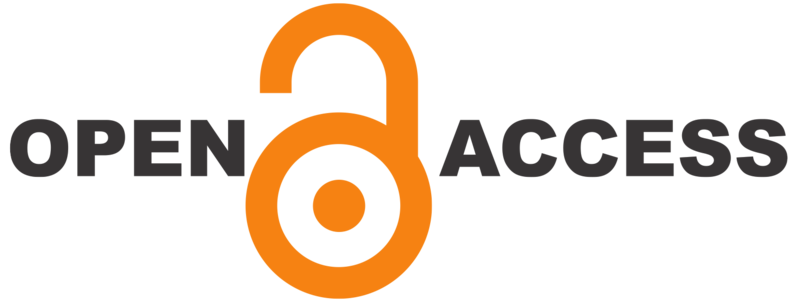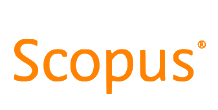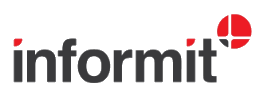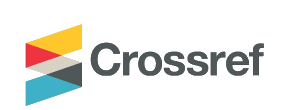Assessment-led reform: Creating a sustainable culture for WIL
DOI:
https://doi.org/10.21153/jtlge2019vol10no1art784Keywords:
WIL, scaffolded, assessment, industry, employability, change, curriculum-led reformAbstract
This paper describes a process of assessment reform designed to enhance Work Integrated Learning (WIL) approaches for two science courses at an Australian university. The project used a mixed-method approach involving online surveys, interviews, focus groups and workshops to gather student, industry and course team knowledge and understanding of WIL approaches to curricula. The investigation centred on the perceived value of collaborating with industry to facilitate enhancements in authentic assessment and on the barriers to, and challenges in, achieving successful outcomes. The action-research project, WIL-on-Campus (WoC), found that assessments oriented toward the inclusion of authentic tasks and processes, that contribute to the employability learning and job-readiness of students, is deemed important to students, industry and academics. However, reforms to assessment practice and process are required. For greatest impact, this study found that assessment reform processes require two critical interdependent factors: the socialisation of the shared institutional value of embedded WIL approaches to assessment, and the provision of top-down support to enable academic course teams to implement the ‘imposed’ changes. Further to this, while academics viewed the changes in approach to assessment design as challenging, they also noted that a shift is timely and believed that a course-wide WIL approach is possible and advantageous.
Metrics
References
Abeysekera, I. (2006). Issues relating to designing a Work-Integrated Learning (WIL) program in an undergraduate accounting degree program and its implications for the curriculum. Journal of Cooperative Education, 7(1), 7–15.
Office of the Chief Scientist. (2015). Bridging a gap between study and work. Canberra: Australian Government. Retrieved from http://www.chiefscientist.gov.au/2015/08/media-release-bridging- a-gap-between-study-and-work/
Berg, B. L. (2004). Qualitative research methods for the social sciences (Vol. 5). Boston, MA: Pearson.
Buckley, J., & El Amoud, L. (2011). Undergraduate Work Placement Programmes in Ireland: Issues and Solutions Cork: Cork Institute of Technology.
Collis, C. (2010). Developing work-integrated learning curricula for the creative industries : embedding stakeholder perspectives. LATHE: Learning and Teaching in Higher Education, 2010 (4-1), 3-19. Retrieved from https://eprints.qut.edu.au/48384/
Connor, H., & MacFarlane, K. (2007). Work related learning (WRL) in HE: a scoping study York: Higher Education Academy.
Daniel, R., & Shircore, M. (2012, 29 October-2 November). Transitioning undergraduate students from law, business, and creative arts towards work integrated learning capstone experiences. Australian Collaborative Education Network National Conference, Geelong.
Desha, C., & Senadji, B. (2014, 8-10 December). Holistically approaching curriculum renewal: A case study of the Queensland University of Technology. Australasian Association for Engineering Education Annual Conference, Wellington.
Edwards, D., Perkins, K., Pearce, J., & Hong, J. (2015). Work integrated learning in STEM in Australian universities: Final Report. Canberra: Office of Chief Scientist & Australian Council for Educational Research.
Ferns, S. (2014). HERDSA Guide: Work Integrated Learning in Curriculum. Australia: Higher Education Research and Development Society of Australasia.
Finkel, A. (2018) Chief Scientist’s Five Point Plan for STEM education, July 11, 2018, Retrieved from http://campusmorningmail.com.au/news/chief-scientists-five-point-plan-for-stem-ducation/?utm_campaign=website&utm_source=sendgrid.com&utm_medium=email
Greenbank, P. (2002). Undergraduate work experience: an alternative approach using micro businesses. Education + Training, 44(6), 261-270. doi:10.1108/00400910210441392
Gulikers, J. T. M., Bastiaens, T. J., & Kirschner, P. A. (2004). A five-dimensional framework for authentic assessment. Educational Technology Research and Development, 52(3), 67. doi:10.1007/bf02504676
Hains-Wesson, R., Pollard, V., Kaider, F., & Young, K. 2019, STEM academic teachers’ experiences of undertaking authentic assessment-led reform: A mixed method approach. Studies in Higher Education (CSHE). doi: 10.1080/03075079.2019.1593350
Jorre de St Jorre, T., & Oliver, B. (2018) Want students to engage? Contextualise graduate learning outcomes and assess for employability, Higher Education Research & Development, 37(1), 44-57, doi: 10.1080/07294360.2017.1339183
Kaider, F., Hains-Wesson, R., & Young, K. (2017). Practical typology of authentic work-integrated learning activities and assessments. Asia-Pacific Journal of Cooperative Education, 18(2).
Kay, J., Ferns, S., Russell, L., & Smith, J. (2018) Innovative WIL Models, retrieved from https://acen.edu.au/innovative-models/
Kemmis, S., & McTaggart, R., eds. (1988) The Action Research Planner (3rd ed.). Victoria: Deakin University Press.
Lasen, M., Evans, S., Tsey, K., Campbell, C. & Kinchin, I. (2018). Quality of WIL assessment in Higher education: a systematic literature review, Higher Education Research & Development, 37(4), 788-804 doi: 10.1080/07294360.2018.1450359
Norton, A., & Cakitaki, B. (2016). Mapping Australian higher education 2016 Melbourne: Grattan Institute.
Oliver, B. (2015). Redefining graduate employability and work-integrated learning: Proposals for effective higher education in disrupted economies. Journal of Teaching and Learning for Graduate Employability, 6(1), 56–65.
Office of the Chief Scientist (2013), Science, Technology, Engineering and Mathematics in the National Interest: A Strategic Approach, Australian Government, Canberra.
Palmer, S., Campbell, M., Johnson, E., & West, J. (2018). Occupational Outcomes for Bachelor of Science Graduates in Australia and Implications for Undergraduate Science Curricula. Research in Science Education, 989-1006. doi: 10.1007/s11165-016-9595-x
Patrick, C.-J., Peach, D., Pocknee, C., Webb, F., Fletcher, M., & Pretto, G. (2008). The WIL (Work Integrated Learning) report: a national scoping study. Brisbane: Queensland University of Technology.
Peach, D., & Gamble, N. (2011). Scoping Work-Integrated Learning Purposes, Practices and Issues. In S. Billett & A. Henderson (Eds.), Developing Learning Professionals: Integrating Experiences in University and Practice Settings (pp. 169-186). Dordrecht: Springer Netherlands.
Rae, D. (2007). Connecting enterprise and graduate employability: Challenges to the higher education culture and curriculum? Education + Training, 49(8/9), 605-619. doi:10.1108/00400910710834049
Rayner, G., & Papakonstantinou, T. (2015). Employer perspectives of the current and future value of STEM graduate skills and attributes: An Australian study. Journal of Teaching and Learning for Graduate Employability, 6(1), 100-115.
Rowe, A., Winchester-Seeto, T., & Mackaway, J. (2012, 29 October-2 November). That’s not really WIL!–building a typology of WIL and related activities. Australian Collaborative Education Network National Conference, Geelong.
Rowe, A. D., & Zegwaard, K. E. (2017). Developing graduate employability skills and attributes: Curriculum enhancement through work-integrated learning. Asia-Pacific Journal of Cooperative Education, 18(12), 153-165.
Sachs, J., Rowe, A., & Wilson, M. (2016). 2016 Good Practice Report–Work Integrated Learning (WIL) Canberra: Department of Education and Training.
Senadji, B., Boman, M., Allbutt, J., & Whelan, K. (2015, 6-9 December). From work placement to employability: A whole-of-course framework. Paper presented at the Australasian Association for Engineering Education Conference, Geelong.
Smith, C. D. (2016). The Emergence and Development of Work-Integrated Learning (WIL): Implications for Assessment, Quality and Quality Assurance in Higher Education. In C.-h. C. Ng, R. Fox & M. Nakano (Eds.), Reforming Learning and Teaching in Asia-Pacific Universities: Influences of Globalised Processes in Japan, Hong Kong and Australia (pp. 337-364). Singapore: Springer Singapore.
Smith, M., Bell, K., Bennett, D., & McAlpine, A. (2018). Employability in a Global Context: Evolving Policy and Practice in Employability, Work Integrated Learning, and Career Development Learning. Wollongong, Australia: Graduate Careers Australia. doi: 10.6084/m9.figshare.6372506
Venables, A., & Tan, G. (2009). Realizing learning in the workplace in an undergraduate IT program. Journal of Information Technology Education: Innovations in Practice, 8, 17-26.
Yorke, M. (2006). Employability in higher education: what it is, what it is not. York: Higher Education Academy (p 6).
Young, K., Palmer, S., & Campbell, M. (2017). Good WIL hunting: Building capacity for curriculum re-design. Journal of Teaching and Learning for Graduate Employability, 8(1), 215-232. doi: 10.21153/jtlge2017vol8no1art670
Young, K., Palmer, S., Campbell, M., Binek, C., Tolson, M., Miller, K., Beech, P., & Krishnan, S. (2018). WIL on Campus (WoC) Report. Final Report. Deakin University, Australia. Unpublished report.
Young, K., Miller, K., Campbell, M., & Palmer, S. (2019). A WIL Assessment Framework – the making of the WAF. Manuscript in preparation.











